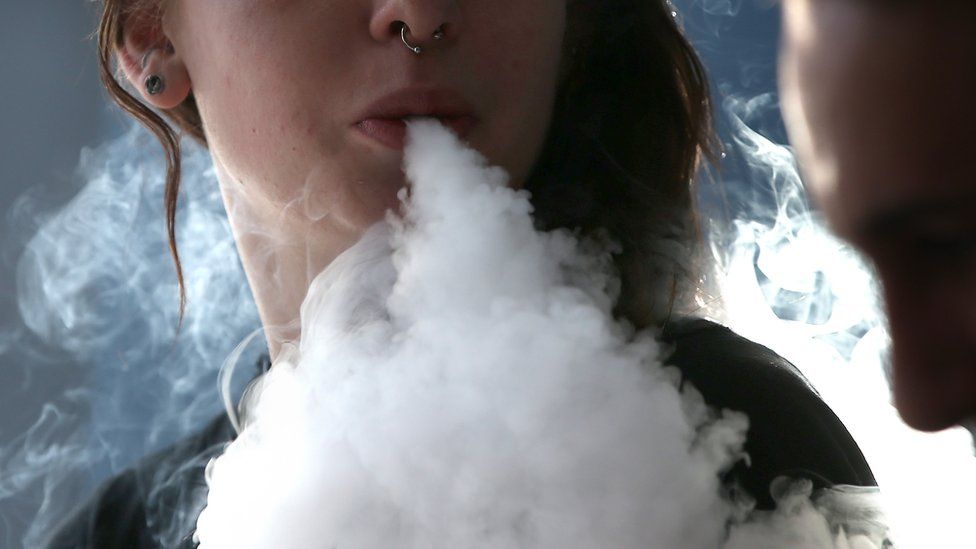Results obtained from an air sample of a small non-ventilated vape shop, clearly indicate that the amount of toxic substances present in the air where a lot of vaping is taking place, are of insignificant levels.
The California Department of Public Health (CDPH), carried out air sampling in vape shops throughout the state, as part of its initiative to determine the health effects of second-hand vapour exposure.
Public Health Expert Dr. Michael Siegel pointed out that the results for this report were obtained from a relatively small and non-ventilated vape shop, where many of the employees and 13 customers were actively vaping while the sampling was taking place, hence what would be considered a situation presenting a high level of exposure to second-hand vapour. However, given all these unfavourable conditions, the results still reported no dangerous levels of exposure to any hazardous chemicals.
This study, although conducted under very high exposure conditions in a small, non-ventilated vape shop with many employees and customers vaping and clouds of vapor visible, did not document any dangerous levels of exposure to any hazardous chemical.”
Dr. Michael Siegel
The main results of the air sampling go as follows :
- Nicotine: Not detected
- Glycidol: Not detected
- Formaldehyde: 7.2 ppb
- Diacetyl: Not detected using standard method
- 2,3-Pentanedione: Not detected using standard method
- Acetyl butyryl: Not detected using standard method
- Acetoin: Not detected using standard method
- Acetone: Not detected
- Ethyl benzene: Not detected
- m,p-Xylene: Not detected
- o-Xylene: Not detected
- Toluene: Not detected
- Acetaldehyde: Not detected
- Acetonitrile: Not detected
- alpha-pinene: Not detected
- Benzene: Not detected
- Chloroform: Not detected
- d-Limonene: Not detected
- Methylene chloride: Not detected
- Methyl methacrylate: Not detected
- n-Hexane: Not detected
- Styrene: Not detected
Finally putting fears about formaldehyde to rest?
Dr. Siegel pointed out that the level of formaldehyde detected, is consistent with the levels normally found in indoor and outdoor air levels under baseline conditions, adding that the only other chemicals detected were ethanol (alcohol) and isopropyl alcohol.“This study, although conducted under very high exposure conditions in a small, non-ventilated vape shop with many employees and customers vaping and clouds of vapour visible, did not document any dangerous levels of exposure to any hazardous chemical. Nicotine exposure was essentially non-existent. Formaldehyde exposure was no different than in many indoor and outdoor environments at baseline. Acetone, acetoin, other aldehydes, toluene, benzene, and xylene were not detected. Chemicals that have been associated with “popcorn lung” were also not detected by the standard method.”
No justification for governments to ban vaping
“This study adds to the evidence that under real-life conditions, ‘secondhand vaping’ does not appear to pose any significant health risks.” concluded the public health expert. He added that whilst he himself has been behind many of the smoking bans that took place, based on this current evidence he fails to see a reason as to why governments should ban vaping in public spaces. “With regards to vaping, I just don’t see any reasonable evidence at this time that it poses any significant health hazard to bystanders.”
Clearing up some myths around e-cigarettes
No doubt you will have seen some of the stories in the media recently following the publication of PHE’s latest update of the evidence on e-cigarettes . E-cigarettes do seem to be a bit like Marmite, courting controversy among the public and media alike.
Not surprisingly, there are lots of inaccuracies and misconceptions about e-cigarettes and vaping. This blog looks at the most common myths and provides the facts.
Our latest comprehensive independent e-cigarette review, authored by leading academics in the tobacco control field, looks at the up-to-date international data and peer-reviewed research.
Despite the sometimes confused, and confusing, media reporting around the safety of e-cigarettes, there is growing consensus around the evidence. While not without some risk, when compared to smoking e-cigarettes are far less harmful.
This view is supported by a number of key bodies, including Cancer Research UK, Action on Smoking and Health, the Royal College of Physicians, the British Medical Association and recently, a major US science body, the National Academies of Sciences, Engineering, and Medicine.
You can check out the full post on clearing up the myths on Public Health England’s website.
